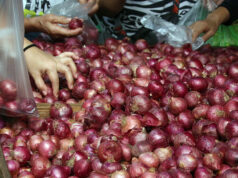Peso weakens vs dollar on oil, policy-easing signals

THE PESO weakened against the greenback on Tuesday after a correction in global oil prices and following recent signals of more easing from the central bank to support the economy amid the coronavirus disease 2019 (COVID-19) pandemic.
The local unit finished trading at P50.63 per dollar on Tuesday, depreciating by 3.5 centavos from its P50.595 close on Monday, according to data from the Bankers Association of the Philippines.
The peso opened the session at P50.63 per dollar. Its weakest showing was at P50.65 while its intraday best was at P50.54 against the greenback.
Dollars traded went up to $340.4 million on Tuesday from the $194.2 million traced on Monday.
Rizal Commercial Banking Corp. Chief Economist Michael L. Ricafort attributed the local unit’s slight weakening to the correction in oil prices. He, however, noted that the peso continues to be resilient as the Tuesday close is still among its “strongest in a month and in 2 years.”
“The peso closed weaker after some slight increase in the global oil prices recently after OPEC+ (Organization of the Petroleum Exporting Countries) agreed over the weekend to reduce oil production output,” Mr. Ricafort said in a text message.
Reuters reported that oil prices inched up by more than 1% on Tuesday with shale output in the US predicted to decline the most in April, aside from the recent cuts from other major producers.
Brent futures inched up by 53 cents or 1.7% to $32.27 a barrel by 0420 GMT after settling 0.8% higher on Monday. Meanwhile, US West Texas Intermediate (WTI) crude was up 32 cents or 1.4% at $22.73 following a 1.5% slip the previous session.
The OPEC reached a deal to slash output by 9.7 million barrels per day in May and June, which would translate to about 10% of global supply before the outbreak.
Meanwhile, a trader said the peso depreciated following comments from the central bank chief.
“The local currency weakened in anticipation of more dovish actions from the BSP (Bangko Sentral ng Pilipinas) to stimulate the Philippine economy from the impact of the COVID-19 lockdown,” the trader said in an e-mail.
BSP Governor Benjamin E. Diokno said on Sunday they are eyeing a “deeper cut” in interest rates as well as another 200-basis-point (bp) reduction in the reserve requirement ratio (RRR) of banks to stem the impact of the outbreak on the economy.
On March 19, the BSP slashed key rates by 50 bps to bring the overnight reverse repurchase rate to 3.25% and the overnight lending and deposit rates to 3.75% and 2.75%.
The BSP has cut rates by 150 bps since 2019, almost completely reversing the 175 bps in hikes implemented in 2018.
The Monetary Board will have its next policy-setting meeting on May 21.
Meanwhile, the RRR of universal and commercial banks was trimmed by 200 bps earlier this month to 12% in a move to boost liquidity amid a lockdown in Luzon.
For today, Mr. Ricafort gave a forecast range of P50.50 to P50.75 per dollar, while the trader expects the local unit to move around the P50.55 to P50.75 levels. — L.W.T. Noble with Reuters



